Chongqing 8 days and 7 nights free travel strategy
On the way to the subway station, I saw a roadside shop that had a booming business, so I also went to eat a bowl of rice dumplings. Perhaps because many people could not eat spicy food, the store specially prepared a small bowl for people to dip in hot sauce, and thought very carefully. The rice dumplings taste very good, but I still have a little unfinished after eating it.

Chongqing is a mountain city, and ground transportation is basically connected by bridges, but for most people, the subway is the best choice. Chongqing's subways extend in all directions and can reach almost all scenic spots.
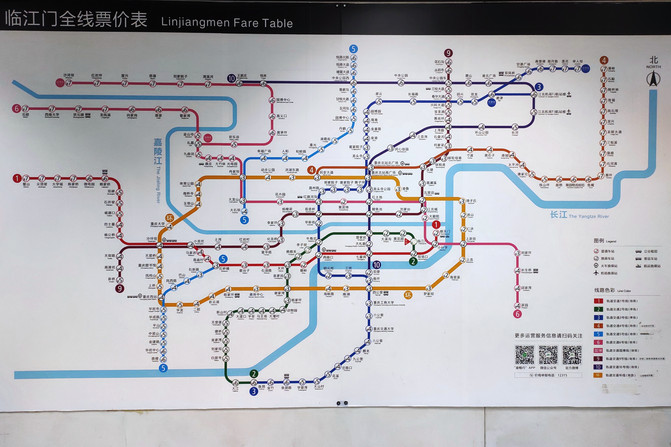
Luo Zhongli saw his oil painting "Father" many years ago. The old man with a bowl and wrinkled face once moved many people. Now he has become the president of the Sichuan Academy of Fine Arts.
On the slope next to the art museum stands "David" by Michelangelo, the famous Renaissance sculptor. "David" was carefully carved by Michelangelo in three years out of a whole piece of marble. The statue is more than 5 meters high with the base. The details are perfectly carved. The characters have bright eyes, healthy muscle lines and skin surface. The protruding blood vessels and blue veins are all well carved, which is amazing. Michelangelo was one of the few artists who was deified during his lifetime. This was related to his high emotional intelligence. It is said that after the statue was completed, a local aristocrat came to visit. In order to show his skills, he proposed that David's nose bridge was carved too high. Michelangelo did not excuse himself, grabbed a handful of stone powder, picked up a chisel and climbed up the ladder, pretended to carve it on the bridge of his nose for a while, and sprinkled the stone powder down, making the aristocrat feel very proud.


The original "David" is now preserved at the Academy of Fine Arts in Florence, Italy. In Florence, there are also two replicas of the statue of David placed in public places for display. One is a bronze statue in the center of Michelangelo's Piazza, and the other is The marble stone statue in front of the gate of the Municipal Square. The David of Chuanmei is the fourth David in the world. The mold used is the mold used to reproduce the replica of the statue of "David" in the center of Michelangelo's Piazza, Florence. It has a history of 108 years. The material and size of its bronze are exactly the same as the statue of David in the center of the Piazza Michelangelo in Florence.

June is the graduation season, and the Art Museum is holding an exhibition of works by Sichuan and American graduates. The themes of the works are rich and colorful, and their imagination is wild, making the brain open.


















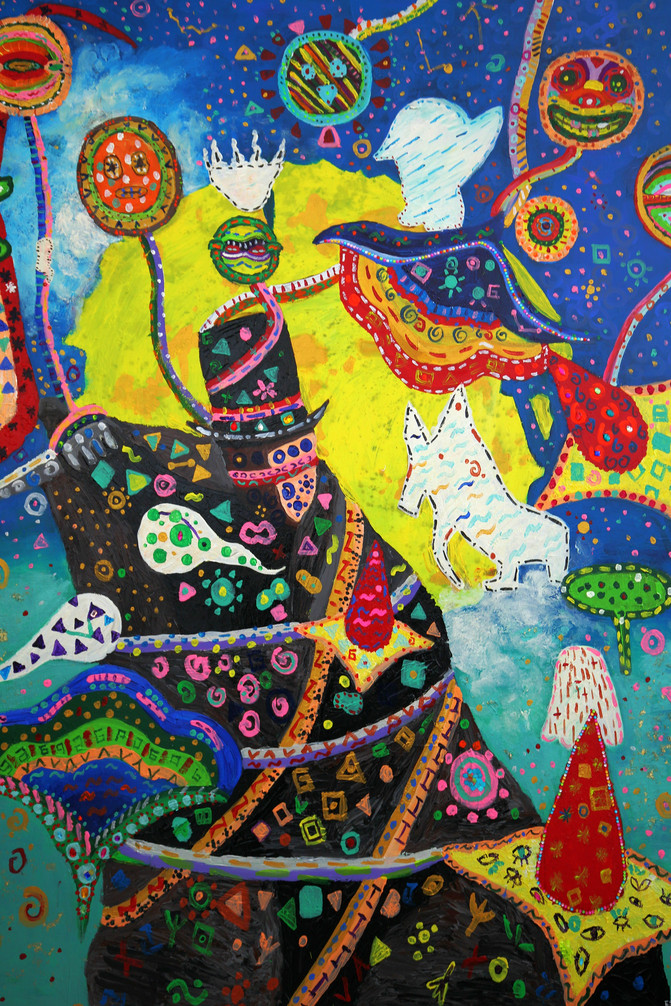




The exhibitions of works collected by the art museum are more classic.








The exterior wall of the art museum is a collage of colorful mosaics, and the architectural form is also a bunch of irregular geometries, which seems eclectic.

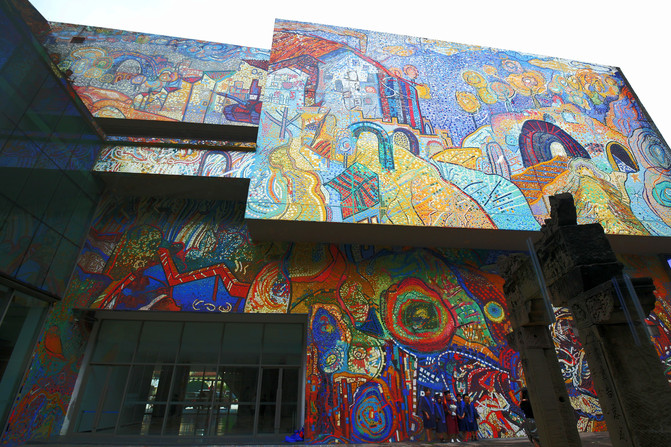


Next is the Qicai Lane of Mafang Bay, which is popular in checking in. There are many recommendations for Chongqing tours here. After playing, the feelings are ordinary. They are old houses and dilapidated alleys are repainted with colorful paint, and some popular entertainers are hung with photo stickers and stickers of cats and dogs. It becomes like a A colorful fairy tale world attracts many young ladies who love to take photos to check in there.
The reason for this dislocation is probably because the recommendation posts are all written by young people and are not suitable for people our age group.


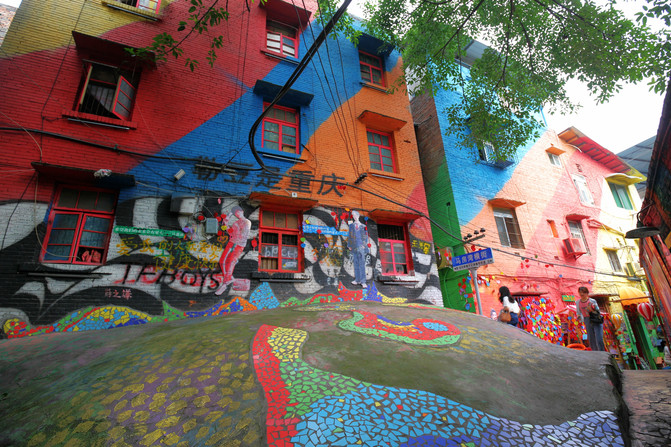




"Mafang Bay No. 66 Jianghu Cuisine" at the entrance of Qicai Lane is a recommended place on many Chongqing food lists. The decoration here is relatively simple. We ordered 4 dishes, but we didn't dare to order anything that looked spicy. We ordered crispy pork, garlic tofu, pig's trotters, etc. The taste did not leave any special impression. Perhaps Chongqing's food is mainly spicy. If you can't eat spicy food, you will definitely not get special features.




After eating, I came out to see that it was getting late, so I went to Hongen Temple to enjoy the night sky in Chongqing.
Hongen Temple Forest Park is a free mountain forest park. Panting for breath, we climbed the steps one after another, walked a long winding road, and finally climbed to the Hongen Pavilion on the top of the mountain. This is the highest observation platform in Chongqing's main city. Unfortunately, the area we can see is not Chongqing The most prosperous place, but after the lights of Hongen Pavilion were lit up, the antique buildings of Diaoliang and Huadong were like an ethereal fantasy and looked beautiful against the various lights.
By the time we finished taking pictures from Hongen Pavilion, it was nearly nine o'clock in the evening. Although it was dark in Chongqing, the surroundings were already black and dark by this time. We used the scattered street lights on the mountain road to guide us back down the mountain and took the bus back to the hotel.







Early the next morning, we went to Xiannv Mountain Scenic Area in Wulong District, Chongqing. At noon, after eating a unique bamboo cage banquet, take the small train from the scenic area and arrive at Fairy Mountain.

On the top of the mountain at an altitude of about 1800 meters, there is actually a large green grassland. Because of its high altitude, the summer temperature here is about 15 ° C lower than that of the main city of Chongqing, so it is known as the "Summer Palace of the Mountain City" and also known as the "Eastern Switzerland".
The entire scenic area of Xiannu Mountain is a natural ranch. On the way to the small train, you can see herds of cattle, sheep and horses grazing leisurely, but not a single cow or sheep can be seen on the large lawn for tourists to play. It is a pity.
We took photos and played on the grass, as if we had returned to childhood.





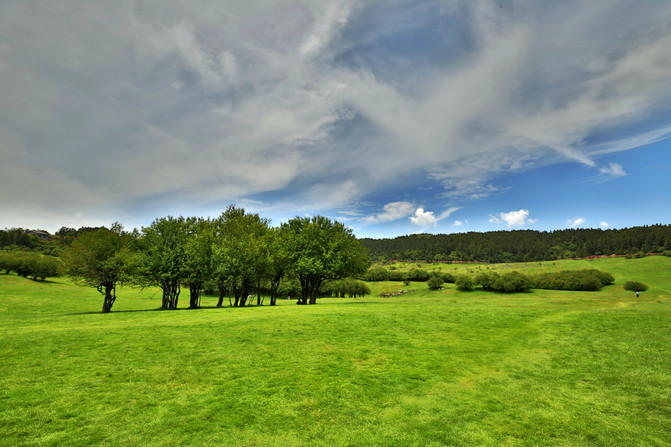



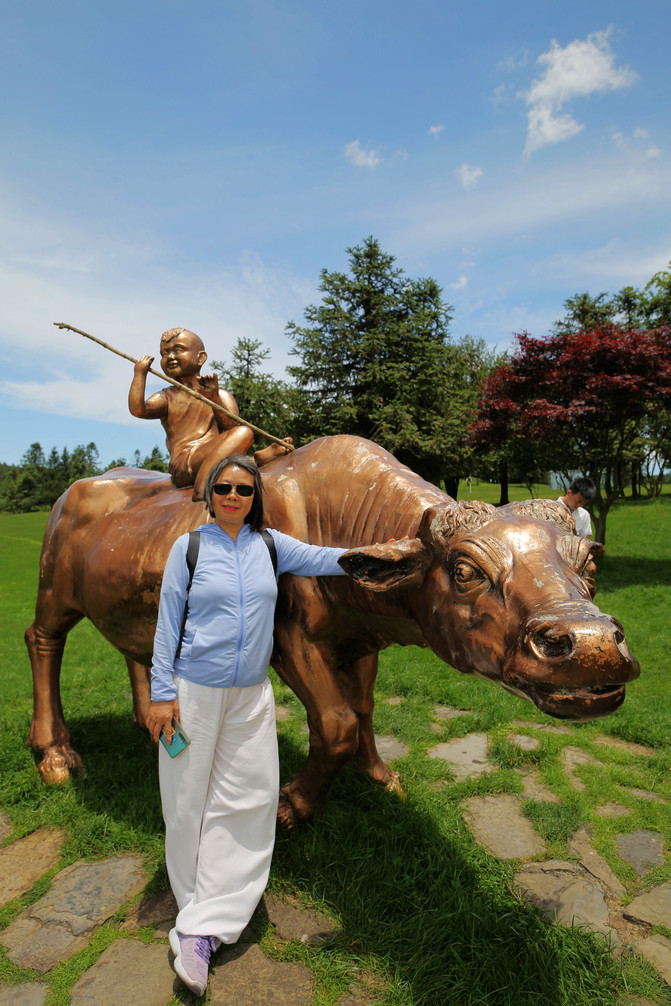



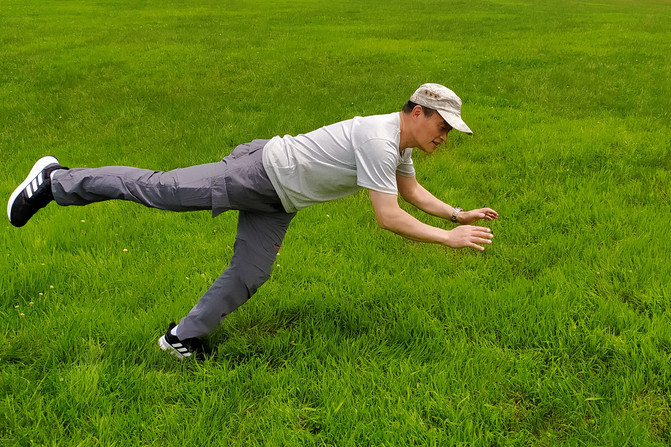



After coming out of Fairy Mountain, we continued to visit the Wulong Tiansheng Third Bridge. This is a typical karst landform. The Tiansheng Third Bridge is composed of Tianlong Bridge, Qinglong Bridge and Heilong Bridge. It is majestic and is the largest Tiansheng Bridge group in Asia. The three bridges have a height, width and span of more than 150 meters, 200 meters and 300 meters respectively. The three bridges are arranged longitudinally and span parallel across the Shuiwen River Canyon, connecting the mountains on both sides of the river. It is rare in China and the world to have such a grand three natural stone arch bridges within a few hundred meters away. It is truly a valuable asset left by nature to mankind.

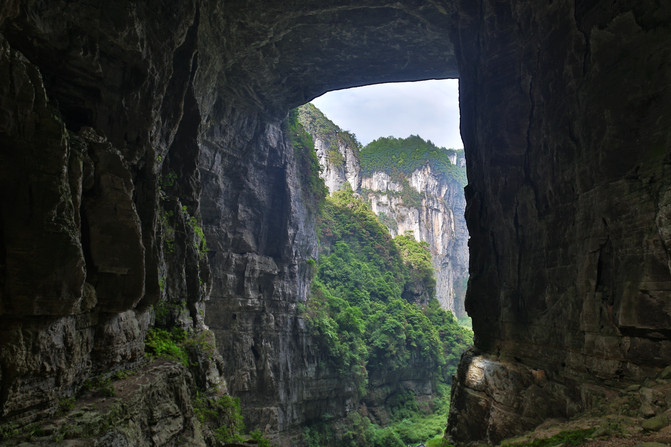
Take the sightseeing elevator directly to the bottom of the valley, and then follow the repaired steps to the Tianlong Bridge. You can see a lifelike picture of "elephants welcoming guests" on the mountain wall facing you. If you continue to walk down, you will see Zhang Yimou at the bottom of the valley. Tianfu Official Posthouse built for the filming of "The City Is Full of Golden Armor". At this time, I looked up and looked back at the road, but I saw the surrounding walls standing thousands of feet. Huge stone beams spanned the sky, forming a natural bridge. Huge rocks on the bridge were intertwined with dog teeth, and water droplets dripped from it from time to time. It made me feel scared. I was really afraid that which huge stone above would suddenly fall off and fall.





In the past, words such as boundless were used to describe the sky, but standing at the bottom of the valley and looking at the sky, it was like sitting in a well and watching the sky. Only a small irregular piece of the sky can be seen. Looking at the sky outside Tianlong Bridge from this angle is like a thumbs up from a tree.





Keep moving forward and you will find Qinglong Bridge. The canyon sky here looks like a green dragon crescent sword. Everyone took pictures and checked in with big knives in their hands.


Walking through the Qinglong Bridge and looking back at the canyon, the big sword at this time had transformed into the shape of a carp jumping over the dragon gate, and the sky above looked like a carp.

Next, at the Black Dragon Bridge, there are several hanging springs flying down 3,000 feet in the bridge hole. Because the waterfall is too slender, it is not easy to see without paying attention, but the sound of falling water droplets is very clear. The water droplets over the years have nourished the stone. The thick moss on the surface is very green to the eyes.

Walking through the Black Dragon Bridge and looking back at the mountain walls on both sides, one said it looked like a goshawk, and there was also a gorilla not far away.


The water in the canyon is very clear. Does the boat on the water feel like it is floating in the air?




After playing Wulong Tiankeng, climb back to the ground and take the bus back to the Elk Hotel in Xiannushan Town to rest.














The Miao family's long-table banquet at noon was quite unique. Although the dishes were average, the dining atmosphere was good. After drinking the Miao family's rice wine, it was a bit high.




Take a boat to visit Wujiang Gallery in the afternoon. The Wujiang River originated in Weining County, Guizhou Province. After entering Chongqing's Youyang Tujia and Miao Autonomous County, it was the "Wujiang Baili Gallery" that is the most elite of the Wujiang River.

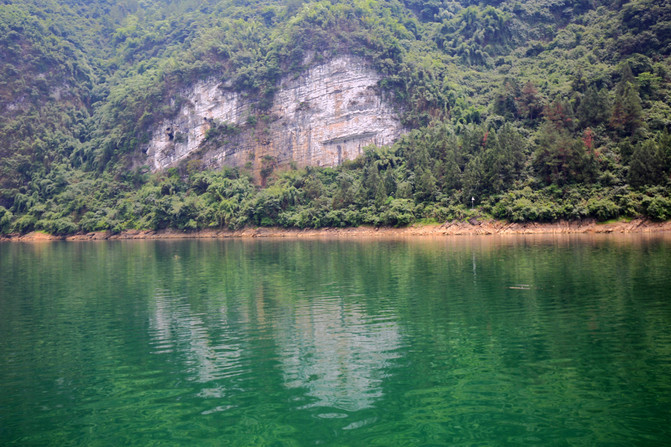


The Baili Gallery on the Wujiang River is a bit like the Little Three Gorges. During a boat tour, the mountains on both sides of the river are far-fetched into stories such as lions and snails. They are not very attractive, but there are a few sections of "mountains like axes and water like jasper", which are still a bit interesting, especially the surging white waves rising from the stern, which are transmitted to the shore layer by layer, forming a scene of shocking waves crashing against the shore.




At night, I stayed at Country Garden Phoenix Hotel and ate Lao Duck Hot Pot. The hotel had a separate balcony and a large bathtub to take a beautiful bath.



The Republic of China Street, which we visited the next day, is a characteristic neighborhood with the themes of "History of the Republic of China" and "Characteristics of Bayu". It is located in Chongqing Liangjiang International Film and Television City. The film "1942" directed by Feng Xiaogang and first invested by Chongqing Film Group used this street as an important location.
There are still many photo props and scenes set up for movie shooting in Minguo Street where you can shoot and check in.










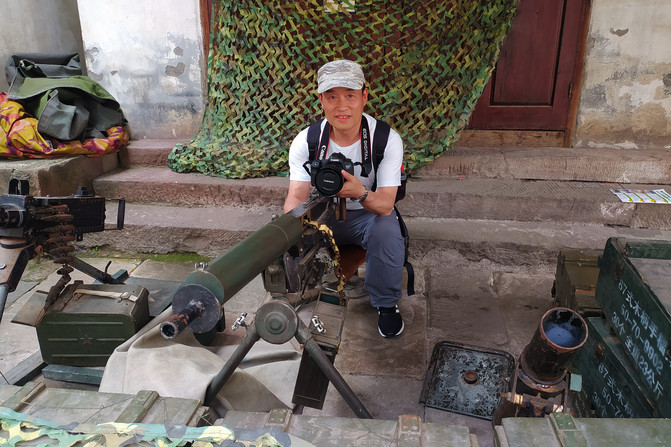
Ciqikou is one of the most famous ancient towns in Chongqing. It was built in the Song Dynasty and was formerly known as Baiyanchang. Later, it was renamed Longyin Town because it was said that Zhu Yunwen, Emperor Jianwen of the Ming Dynasty, had fled and lived here. In the late Qing Dynasty, due to the development of porcelain industry in the town, because the word "porcelain" is connected with "magnetic", it was also called Ciqikou.
Nowadays, it has become an antique street, with many merchants and tourists crowded with each other, making it extremely lively.



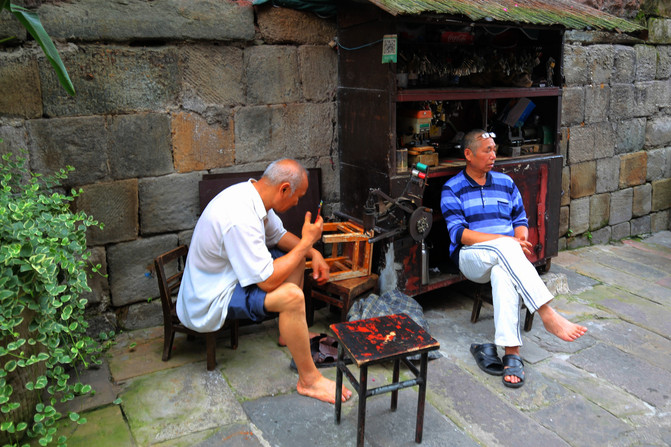


After coming out of the magnet mouth, we went to Liziba to take pictures of the light rail crossing the building. The shooting location here is very small and crowded with people. It is almost impossible to take a photo without anyone else disturbing it.
Liziba's light rail passes through the building. It seems that rail transit and residential buildings are connected. In fact, the building and rail transit are designed and constructed at the same time. The two adopt separate structures and do not overlap each other, avoiding vibration on residential buildings. impact.



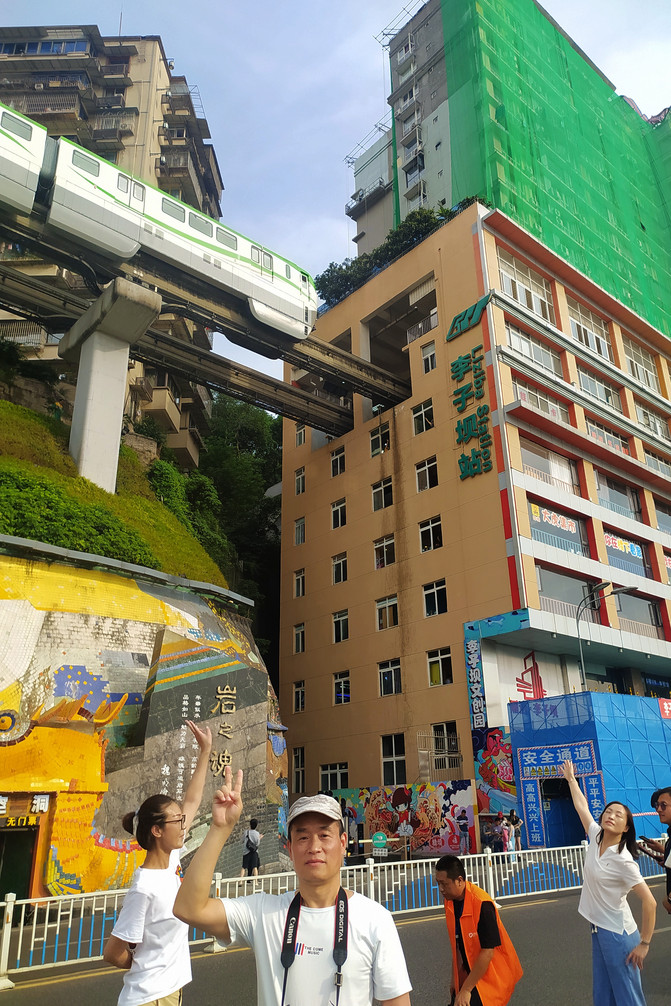
Stay at the Pinro Hotel in the Peninsula Business Building in the evening.
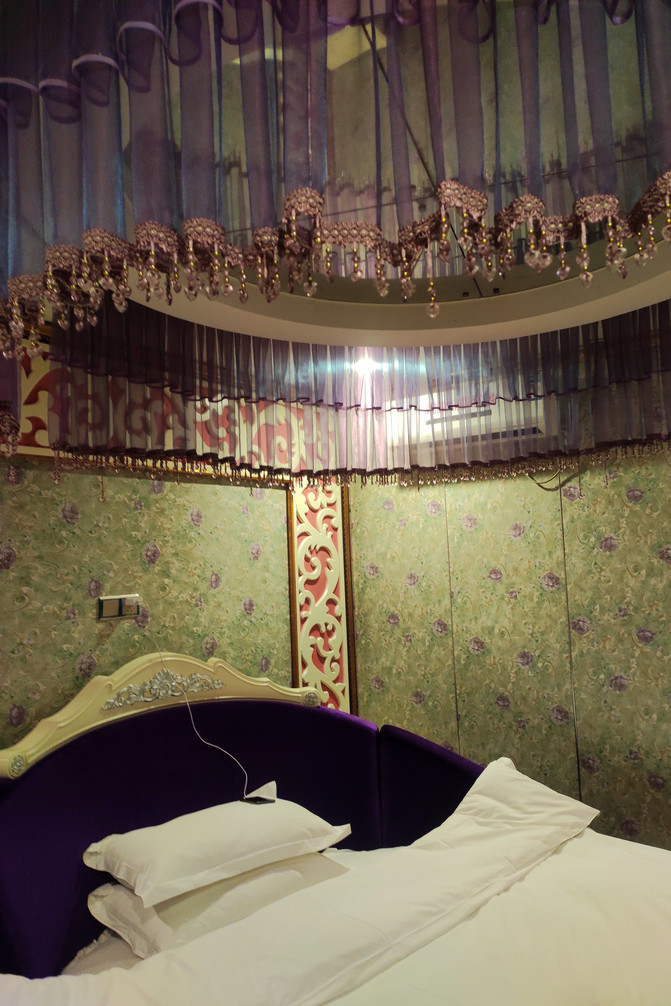
After putting down my luggage, I went to Bayi Delicious Street, ate kebabs, freshly made shrimp slices, sweet potato dried bean curd, drank Chongqing's characteristic milk tea, then walked to Qiansimen Bridge, walked to the stone beach on the other side, and enjoyed Chongqing's unparalleled night view.










The crowd is surging on the stone beach. Only when you come to Chongqing will you know that the fireworks are finally back.
Standing on the Qiansimen Bridge and shooting the Internet celebrity Hongya Cave, you can see a panoramic view. The light time for Hongya Cave is from 8:00 to 11:00 p.m. The dull Hongya Cave during the day becomes a beautiful fairyland on earth when the lights are turned on at night.


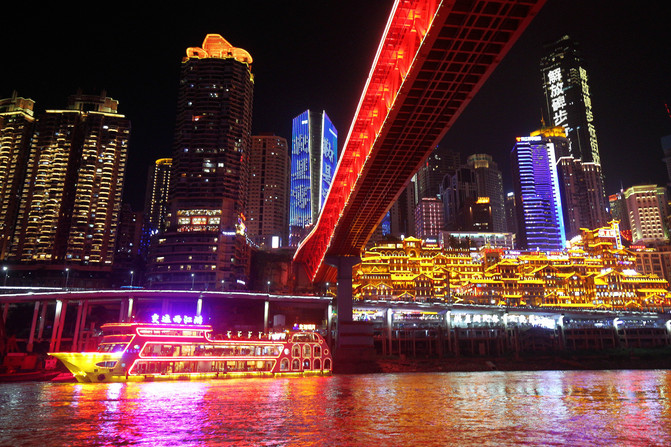





The next morning, I ate a bowl of Chongqing noodles near the hotel, and then took the subway and transferred to the public bus to the graffiti street.
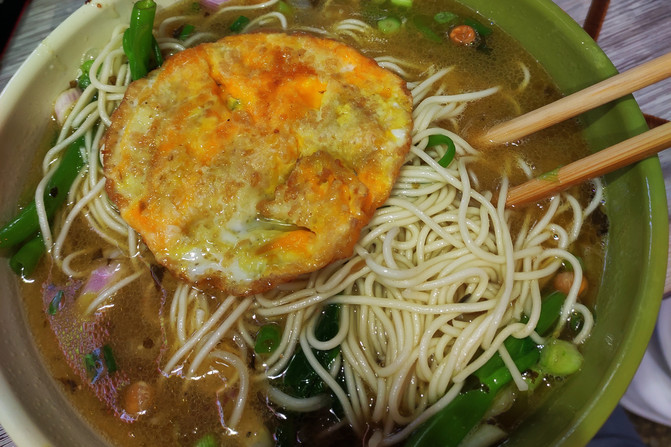
Huangjueping Graffiti Art Street is a large-scale cultural and creative industry project created by Luo Zhongli, Dean of Sichuan Academy of Fine Arts, and jointly created by the government and Sichuan Academy of Fine Arts under the direct leadership of Chongqing City Creative Office. More than 800 workers, students and artists participated in the production of the entire graffiti project. After 150 days of careful production, the appearance of the entire neighborhood has undergone significant changes.
Nowadays, anyone on the Graffiti Street can improvise and paint a few strokes. In the lower areas, the original graffiti works by professionals have been completely covered with colorful messages such as visiting here, leaving only the paint all over the wall. You can enjoy it. Only some works of graffiti on the exterior walls of buildings can still see some of their original appearance.







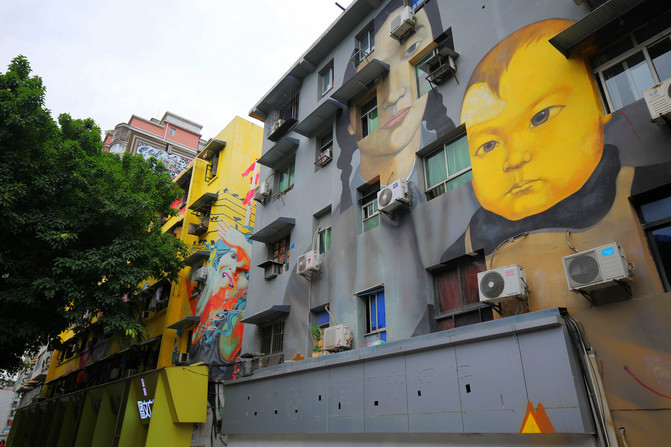



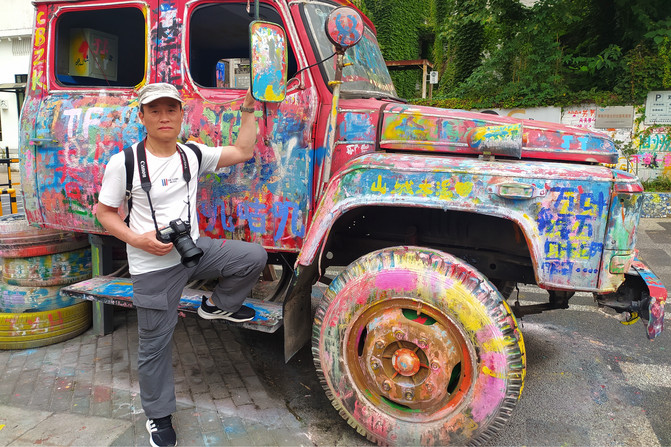





Coming out of the Graffiti Street, we went to the traffic teahouse where we checked in to the Internet celebrity. The transportation teahouse is located on Huangjueping Main Street. It is the only teahouse in Chongqing that maintains the style of the 1970s and 1970s. The teahouse is not big, with an old-fashioned wooden frame structure, uneven beams, gray and black bricks and mottled walls reveal a unique sense of the age. In 2005, the transportation teahouse that was on the verge of bankruptcy was contracted by Chen Anjian, a professor at the Oil Painting Department of Sichuan Academy of Fine Arts, who often went to collect customs, and retained the management style of the teahouse from the 1970s and 1980s to the greatest extent. Today, Professor Chen's special seat is still reserved here. The movie "Crazy Stone" has been filmed here, and many of Professor Chen's works based on the old teahouse have also become classics.





Zhongshuge is the name of a bookstore. Because of its unique style, it has become a must-check place in Chongqing. When we arrived, around 9:45 a.m., the bookstore didn't open until 10 o'clock to welcome guests. Several floors of the mall where the bookstore is located are empty, and there are only a few young people waiting to enter Zhongshu Pavilion in the entire mall.
The lampshade shaped bookshelves at the entrance are continuous under the reflection of the ceiling mirror, increasing the level of the space.
Walking into the Shushan display wall inside, I was really shocked by the unique design. The staggered steps are symmetrical and regular. The entire bookshelf and stairs, which are already tall, are reflected by the mirror at the top, and become more magnificent and complex without chaos. The bookstore space is like Chongqing's crisscrossing bridges and countless ladders, which is very consistent with the magical temperament of the mountain city.



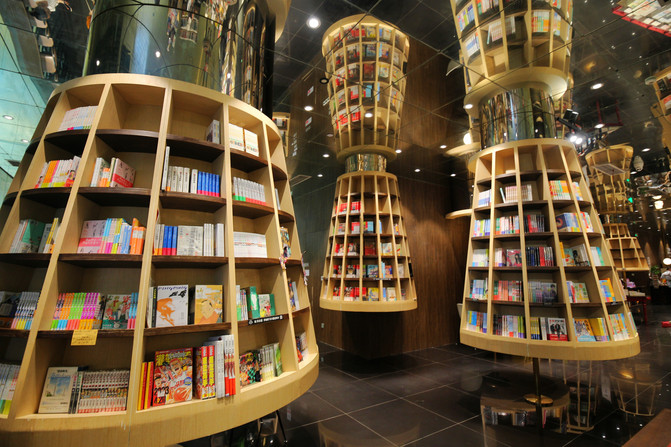
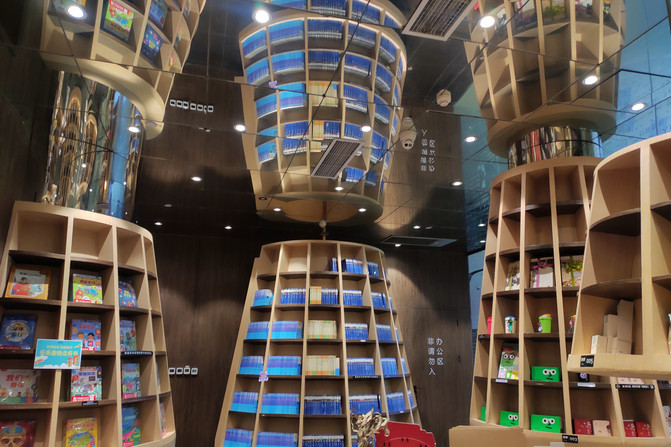

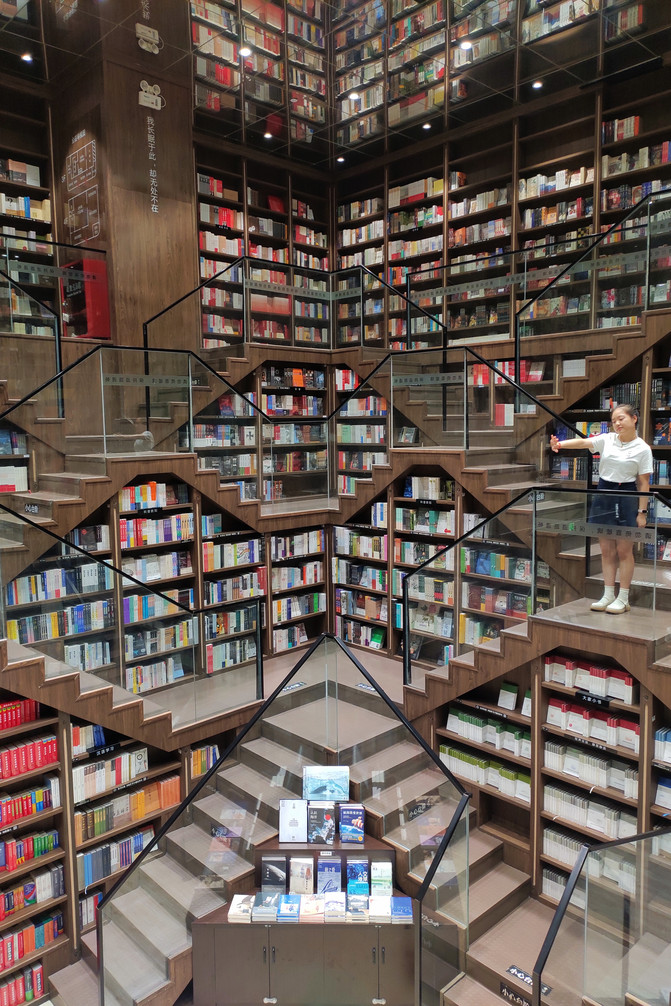

The next Chongqing Garden Expo Park is a place where people's legs can be broken. The entire park is divided into more than a dozen large exhibition areas, including the Northern Garden Exhibition Area, Jiangnan Garden Exhibition Area, Lingnan Garden Exhibition Area, Min-Taiwan Garden Exhibition Area, and Western Garden Exhibition Area. Each exhibition area is divided into more than 10 city exhibition areas, one by one. Looking at it, it is impossible to achieve without super physical strength.







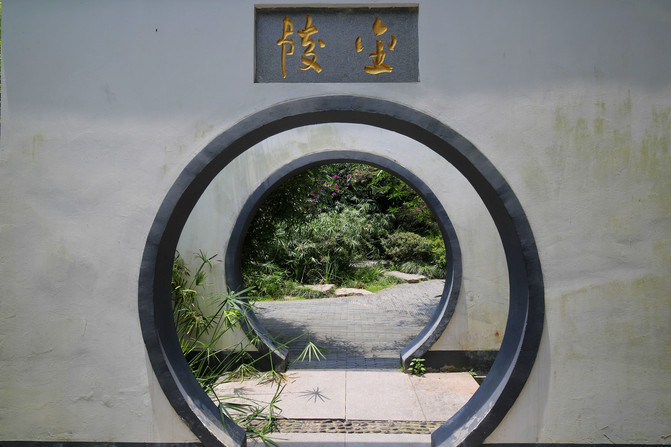






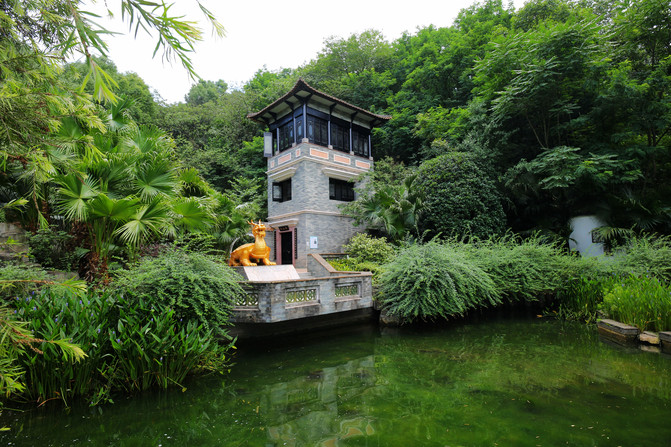


We stayed inside for almost the entire afternoon, visited almost the entire scenic area, and had to admire our physical strength.





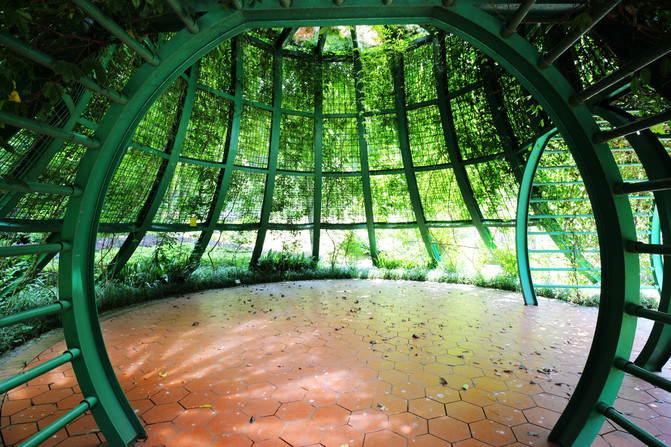




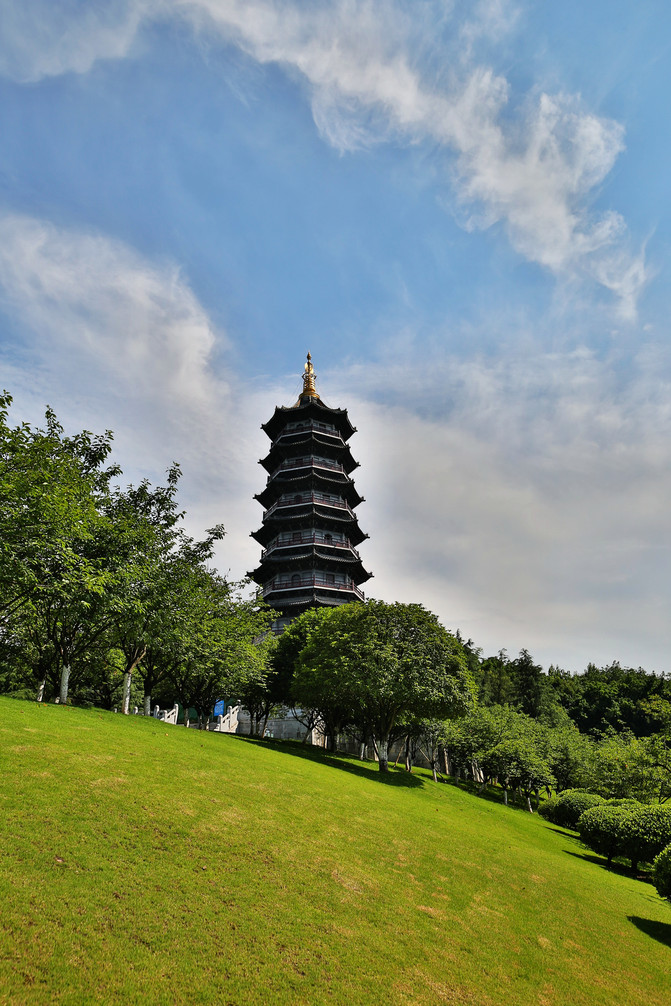


In the evening, we went to Guanyinqiao to eat a delicious street and ate barbecue and pork liver rice. These lighter things were more to our taste.



After dinner, I took the subway to Nanbin Road. After walking for a long time, I arrived at the front of the Chaotianmen Raffles Building and photographed the night at Raffles Square.
Some people say that Raffles 'tall buildings are the sails for Chongqing to set sail and the feng shui of modern Chongqing, which is conducive to Chongqing's urban development, but others say that its existence undermines the city's feng shui.

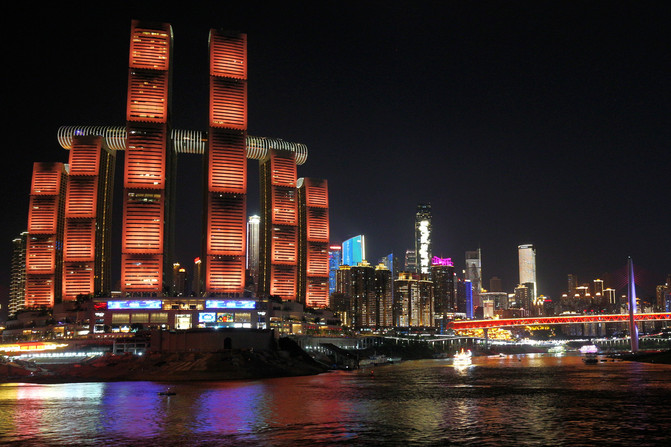
Early the next morning, we took a bus to visit Dazu Stone Carvings. The Dazu stone carvings were carved in the Tang, Five Dynasties and Song Dynasties, and were also carved in the Ming and Qing Dynasties. They are a world cultural heritage and one of the eight largest grottoes in the world.
The first thing we went to was the Beishan stone carvings. The Beishan stone carvings were dug from the first year of Jingfu in the Tang Dynasty to Shaoxing in the Southern Song Dynasty (892-1162 AD). The statue cliff is about 300 meters long and 7-10 meters high. The statue niches are as dense as beehives and are divided into south and north sections.
The Beishan stone carvings have distinctive personalities, beautiful bodies, well-proportioned proportions, gorgeous clothes, beautiful flowers and beads, exquisitely carved and decorated. The statue of Samantabhadra Bodhisattva is known as the "Oriental Venus", the statue of Manjushri Bodhisattva is known as the "Oriental Beautiful Man", and the statue of Guanyin with Beads is nicknamed "Meitai Guanyin". Therefore, the Beishan stone carvings have the "Exhibition Hall of Chinese Guanyin Statues". It is recognized as "a pearl in the crown of Chinese grotto art."

















After lunch, we went to Baoding Mountain and first visited the Dazu Stone Carving Museum, which systematically introduced the past and present lives of Dazu Stone Carvings and displayed a large number of objects.









The cliff statues of Baodingshan were first dug during the Southern Song Dynasty. Buddha statues were carved on the rocks and rocks within 2.5 kilometers around them. All statues are well-documented in pictures and texts, and no niche is repeated. There are more than 360 giant carvings, among which the most famous are the Buddha Nirvana Statue of the Song Dynasty, the Three Saints of Hua Yan, the Cattle Herding Painting, and the Three Grade Nine Life Painting.
The Dazu Stone Carvings are different from the other four major grottoes in China. There are many carvings in the form of comics here, such as cattle herding paintings, three-grade nine-life paintings, etc. The carvings are linked together and connected into one piece. It is said that the Dazu stone carvings hidden in a corner of the southwest were first discovered in the 1940s. At that time, Liang Sicheng and other construction societies took the lead in inspecting the cliff statues of Dazu Beishan and Baoding Mountain. Later, Yang Jialuo and others organized a "Dazu Stone Carving Inspection Group" to conduct more comprehensive inspections and demonstrations. For the first time, they told the people that Dazu stone carvings "can inherit Yungang and Longmen tripod", thus laying the foundation for the famous Dazu stone carvings that have lost their history. Paving the way.




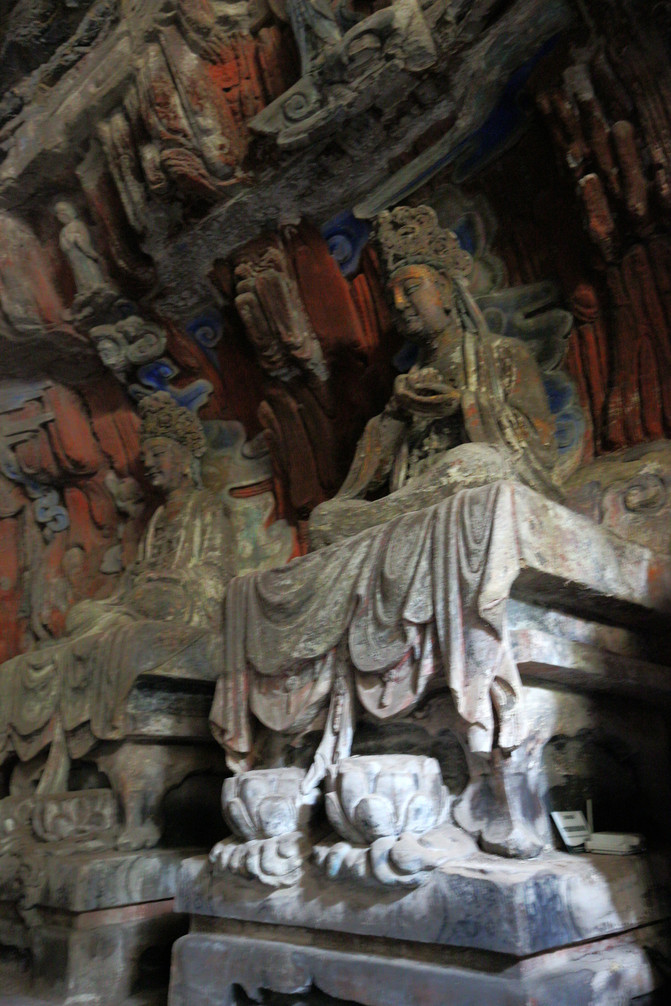


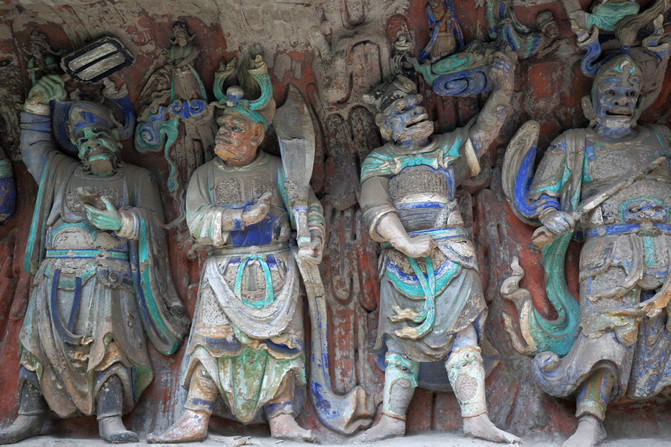
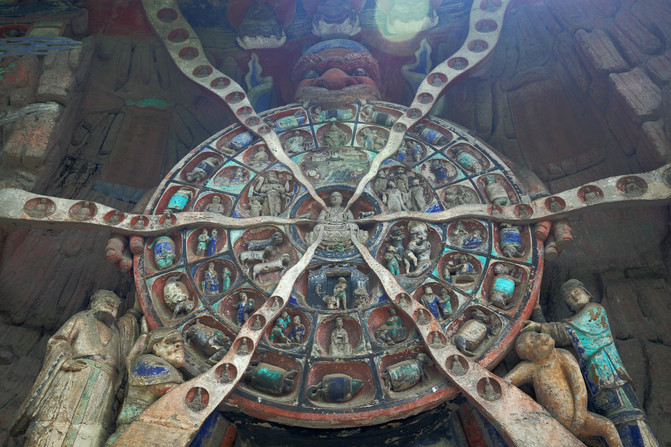

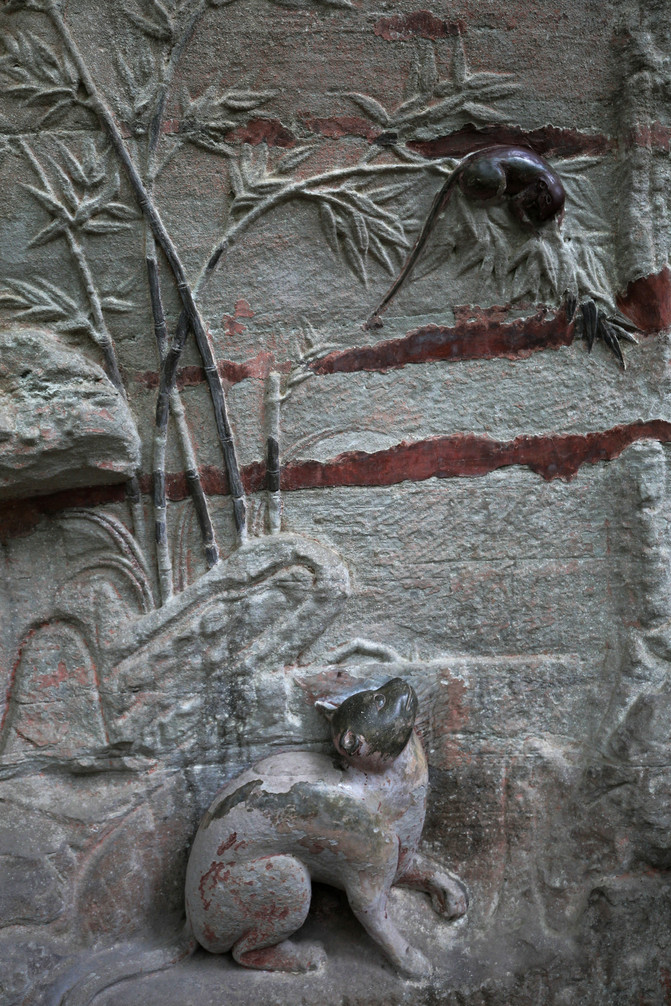

The "Three Saints of Hua Yan" has Pilu Buddha in the middle. He has a snail bun on his head and two beams of light on the bun. He makes a seal with his left hand and stretches forward with his right hand. On the left is Samantabhadra Bodhisattva, wearing a high crown on his head and holding a relic pagoda with both hands on his chest; on the right is Manjusri Bodhisattva, also wearing a high crown on his head, reaching out with his left hand to his chest to hold a seven-layered pagoda, and holding the pagoda with his right hand. The three statues are all 7 meters tall and 2 meters wide at their shoulders. They have kind and peaceful faces, their eyes look down and their feet step on lotus platforms.
The hands of the three main statues are extended forward and tilted nearly 20 degrees, so that close viewers can face the entire face directly. In particular, Manjusri holds a 1.85-meter-high seven-level pagoda in his hand, and his arms are suspended in the air. The weight of the tower and his hands is nearly a thousand pounds. In order to keep the arms falling, the craftsmen successfully applied the principles of architectural mechanics to carve out wide-sleeved cassock shawl and hanging ribs gracefully down, connected with his body, and cleverly directed the center of gravity to the main statue.





There is a cliff Thousand-Hand Guanyin statue with 830 hands in the Baodingshan Grottoes in Dazu. It has a history of more than 800 years. People call it a unique figure in the world!
This veritable thousand-handed Guanyin created by ancient Chinese artists has crisscrossing arms, like a peacock opening its screen. Upon closer inspection, none of the arms have the exact same shape, which can be said to be in a variety of shapes.

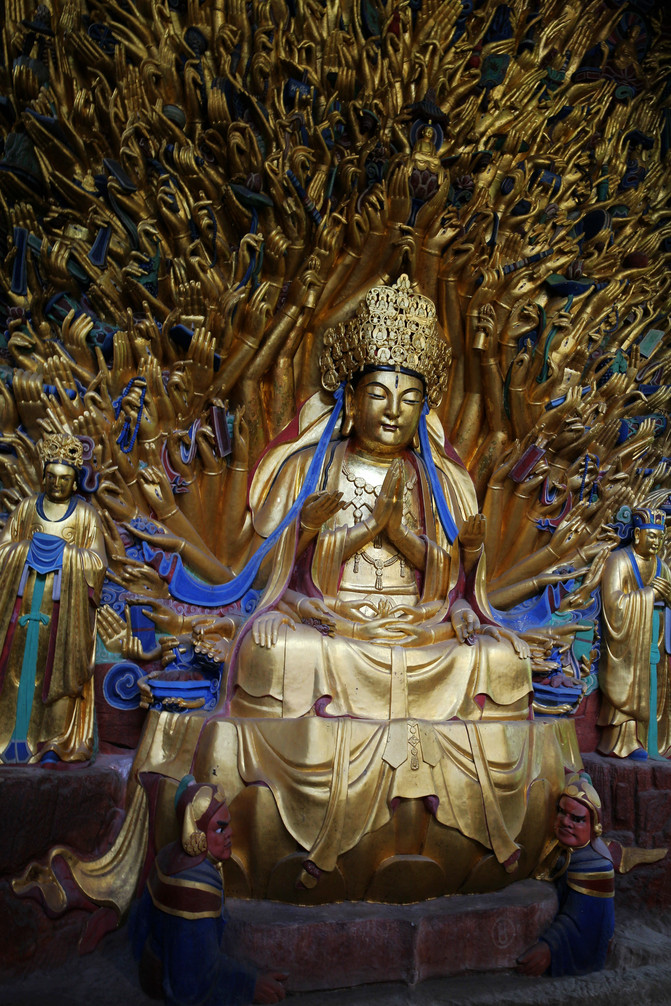
The Sakya Nirvana Shrine is one of the most exciting parts of the Dazu stone carvings. The Buddha is huge in size, with only the upper body carved, and the lower body integrated into the mountain. The Buddha looks peaceful, kind and handsome.
In front of the reclining Buddha, fourteen statues such as Shengwen, Bodhisattva, Emperor Shi and Dharma Protector were bowed and stood, only exposed. They are the disciples who came to the Buddha one after another after another when they heard of the Buddha's "Nirvana." These disciples looked sad and reluctant to part with each other. Different from other Buddha nirvana carvings, the Buddha has two Sichuan Tantra people, Zhao Zhifeng, the initiator of Dazu stone carvings, and his master Liu Den.










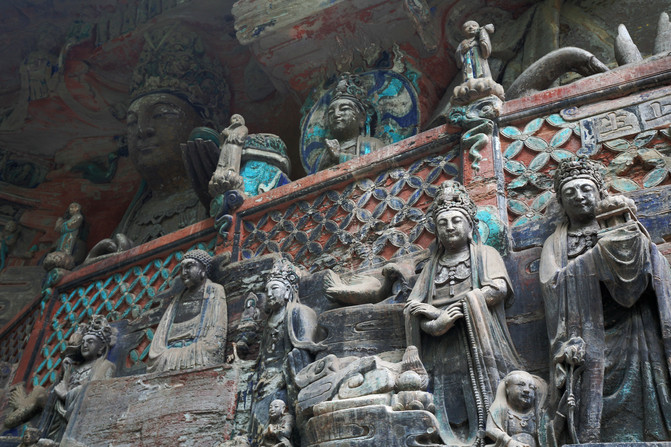




In the evening, I went to Chuancheng No. 22 Sichuan Restaurant and ate spicy chicken, sugar and oil cakes, etc. The so-called No. 22 refers to the fact that the Sichuan Restaurant is located on the 22nd floor. It is crowded, but the dining environment is good. After eating, I climbed up to the top floor garden to enjoy the scenery.






I walked to Hongya Cave in the evening and truly felt the popularity of Hongya Cave. The street was crowded with people, and I could hardly move forward.
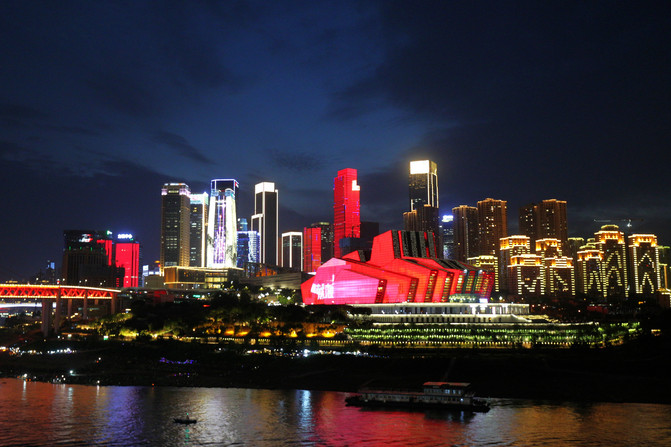






Early the next morning, I took the subway to the Chongqing People's Auditorium. The People's Auditorium of Chongqing City was built in 1954. It is a building complex modeled on the Temple of Heaven in Beijing. It is a masterpiece of the ingenious combination of traditional Chinese palace architectural style and the long-span structure of Western architecture. It is also one of Chongqing's landmark buildings.
The large dome inside gives people the feeling of being in a foreign country. The red pillars on both sides of the rostrum are said to be made of golden nanmu. Such a thick and straight golden nanmu is probably worth a lot of money now!

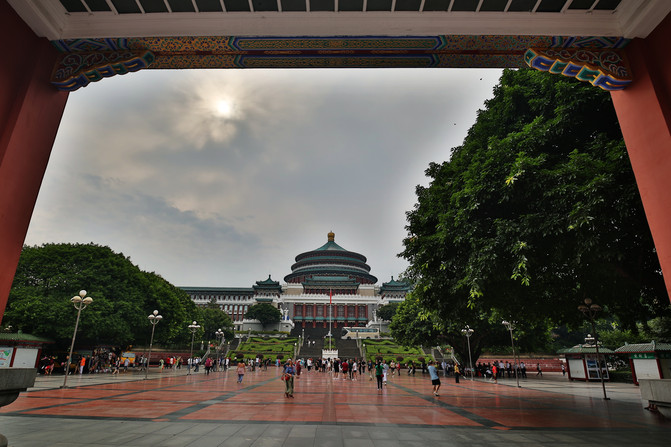

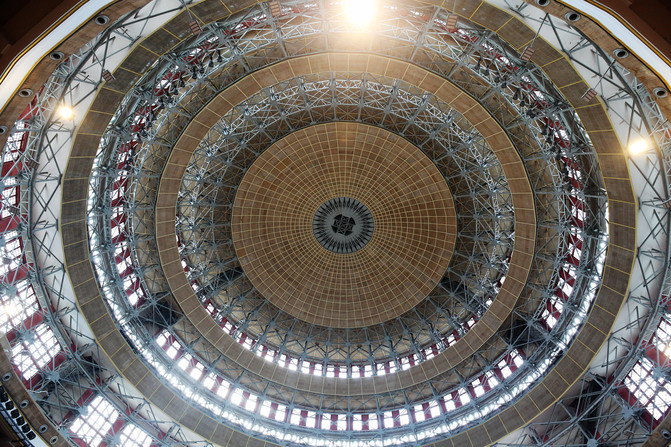







Next, continue to visit the Three Gorges Museum opposite the auditorium.







This is one of the treasures of the Three Gorges Museum's Warring States Bird-shaped statue. Except for the hole in the shape of a fish's beak, this bird-shaped statue has no hole anywhere else. That is to say, this bird-shaped statue is not a wine vessel, but a decoration that does not have practical value.
The overall shape is bird, with fish beak, eagle beak nose, animal ears, phoenix crown, pigeon body and duck feet. The whole body is decorated with fine honey feathers, and turquoise is regularly inlaid on the feathers.

The Three Gorges Museum has fewer treasures than other large museums in China, but the carvings on several sarcophagi are still interesting.





After coming out of the museum, I had lunch at Ikea Rice in the nearby delicious street.
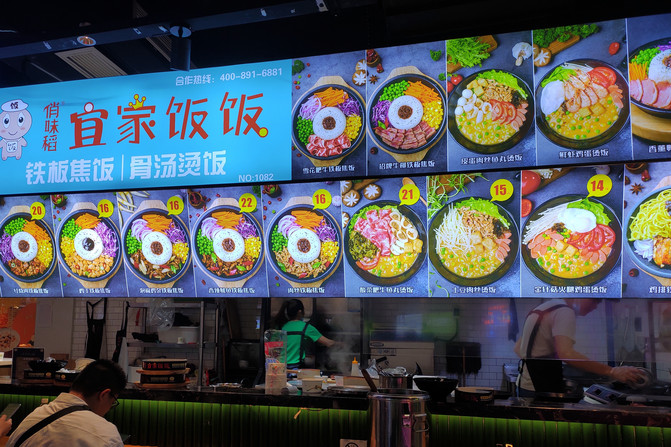

The Chongqing Art Museum, located in the Cathay Pacific Art Center, is not very rich in exhibitions. It comes out after a simple tour.





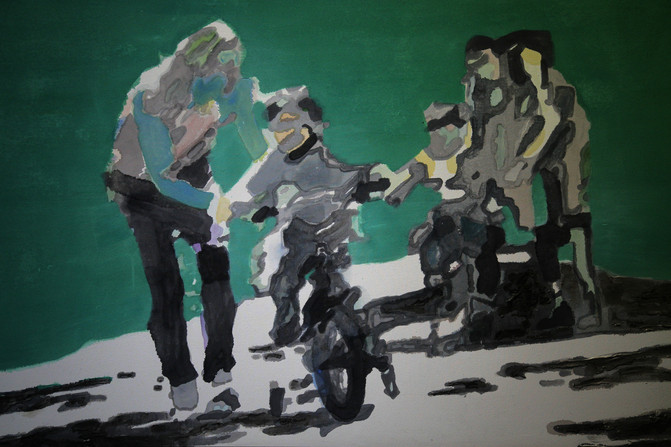
Went to the Van Gogh Sky Art Center located on the 4th floor of the Metropolitan Oriental Plaza. There are bright lights and shadows inside, and there are not many people. You don't have to worry about others breaking into the camera. It is very suitable for taking photos.















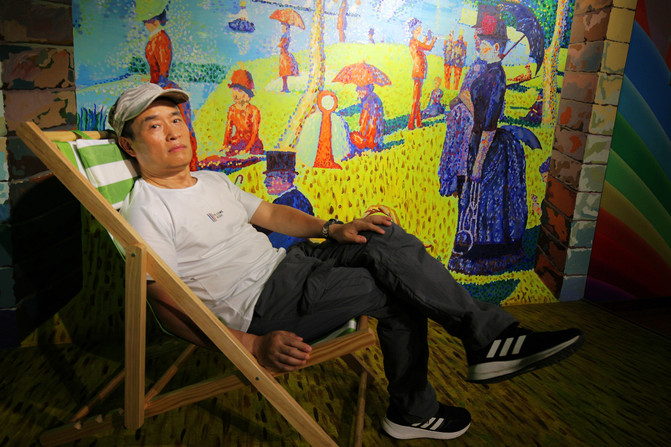




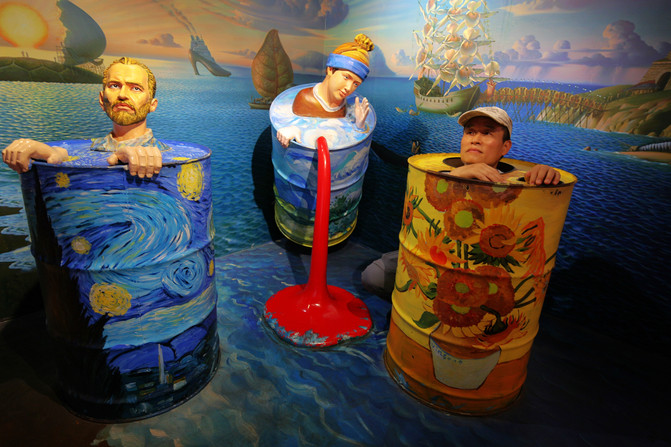

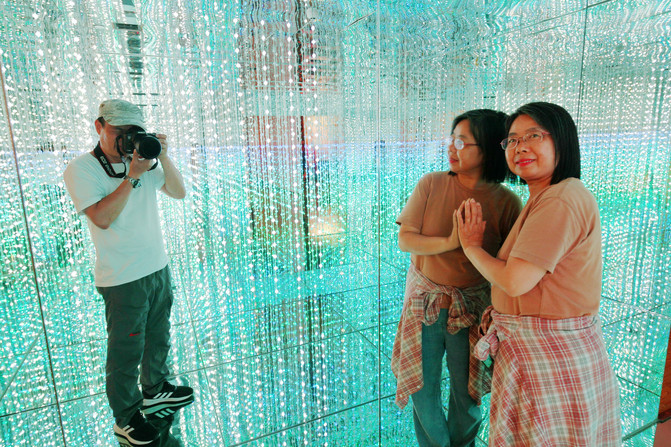













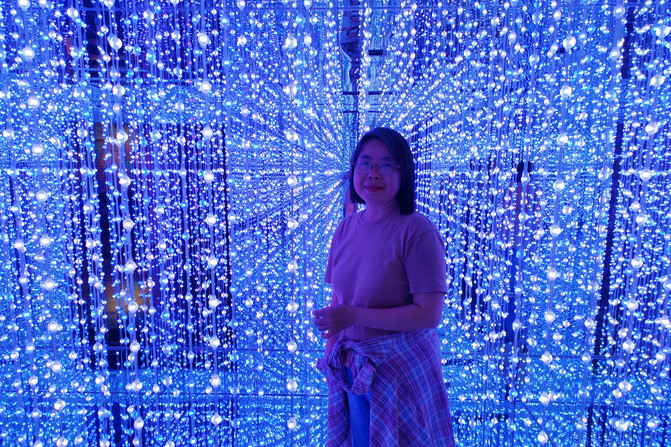






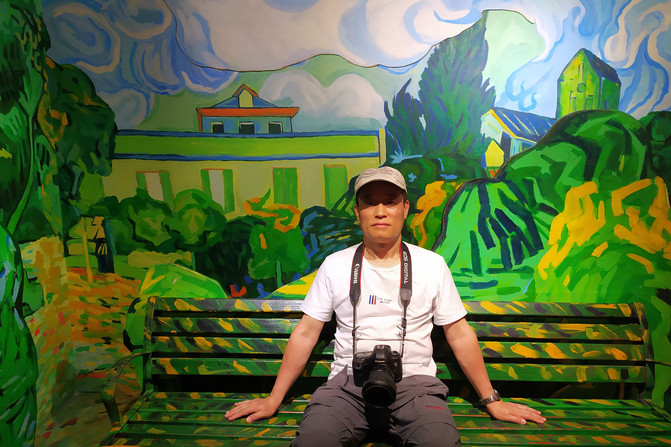





Haitang Creek Tongzi Building is a recommended check-in place in many Chongqing tour guides. We cannot avoid the customs and rush all the way there to check in. Due to his unfamiliarity with the line, he accidentally bumped into a resident's home and spent a so-called cleaning fee of 10 yuan to enter the building.
In fact, it is dark and messy inside, which is not suitable for taking photos at all. It is not easy for photos to shine.




Dinner was eaten in the famous hot pot of "Zaili". There was a need to queue up inside, but it was difficult to get myself. Faced with a dazzling array of dishes, I didn't know how to choose, so I spent 193 yuan for a set meal for two, and spent 4.5 yuan for 9 small abalone at special price. Fortunately, I ordered the mandarin duck pot. After rinsing the bottom of the butter pot for a few chopsticks, the saliva and tears flowed from the spicy water. After that, I could only rinse clear soup.
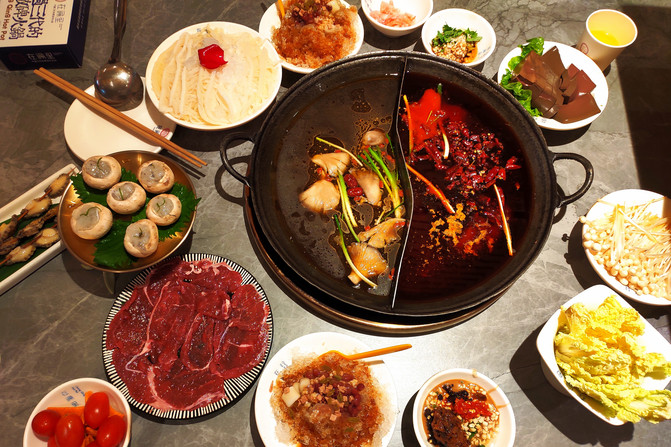
After eating and drinking enough, we walked to Shibati.
The origin of the 18 ladders is said to be due to an ancient well, which is exactly eighteen steps away from the residents 'residences, so this place has gradually been called "18 ladders". This was once a living path and a road of time that people in the mountain city must only go through. It is the deepest nostalgia of Chongqing people. The houses built in turn along the ramp are typical of Chongqing style and an excellent place for outsiders to experience Chongqing characteristics.










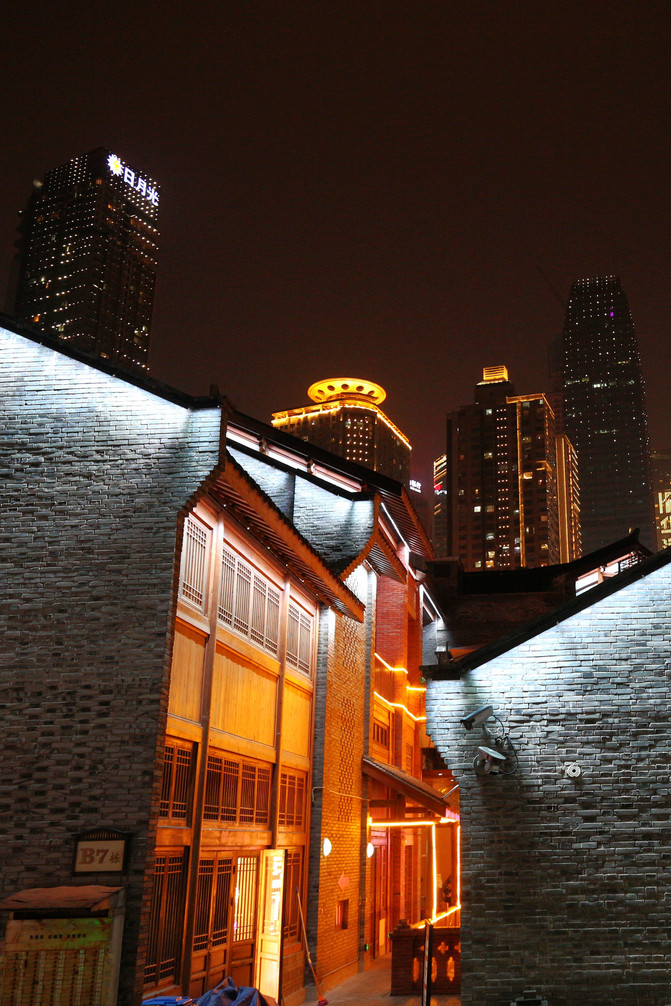




When you come to Chongqing, you must visit Zhizidong and Baigongguan.
The Zhizidong was originally a small artificially mined coal cellar. Because the produced coal contains a lot of coal gangue, it is called the Zhizidong. In 1943, the Military Control Bureau took into account the hidden terrain of this place, with favorable conditions such as relying on three sides and facing a ditch, and changed it into a prison. There are two women's prisons and 16 men's prisons here. Famous Jiang Zhuyun, Xu Jianye and others are detained here.



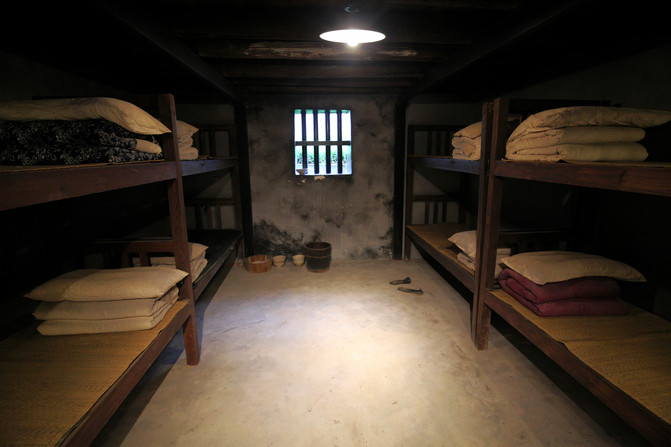

Baigongguan was originally a suburban villa owned by Sichuan warlord Bai Ju. Because Bai Ju claimed to be a descendant of Bai Juyi, the great poet of the Tang Dynasty, he used the two words in front of the poet's brand name "Xiangshan Jushi" to name his villa "Xiangshan Villa".
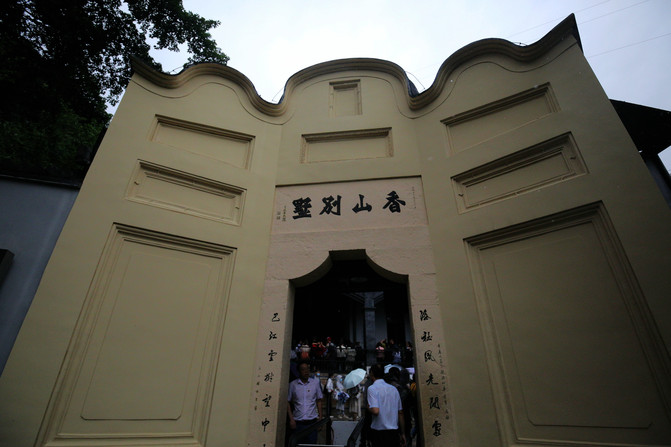

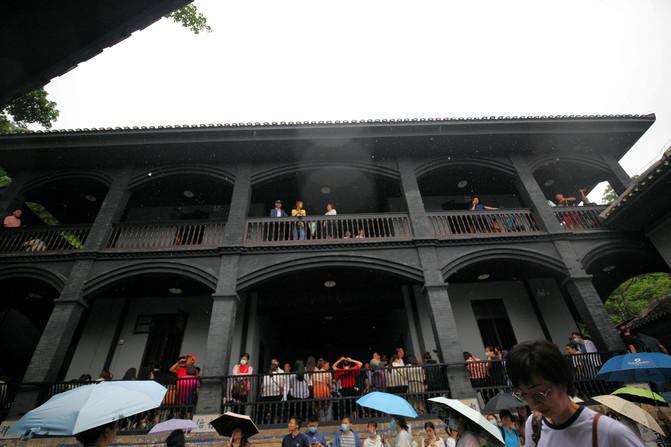

On October 1, 1949, when the news of the founding of New China reached Zhizidong and Baigongguan Prisons, Luo Guangbin and more than 100 people detained in Baigongguan Prison could not calm down their excitement. They used a red sheet and a few paper-cut five-pointed stars made a red flag.

Under the walls of the White Mansion, there stands a statue of "Little Radish Head".

After coming out of Baigongguan, I returned to the hotel to tidy up and checked out. I stored my large luggage at the hotel. Then I went to Chichi Street to eat Dingjiapo potatoes. After eating, I took the subway to Danzishi Lao Street.


Legend has it that Danzi Stone is related to Dayu's control of water. At that time, Dayu passed through his house three times to control the water but did not enter. His wife, Tushan, missed her husband very much and often went to the riverside to find her husband. After waiting for Dayu to not arrive, she gave birth to her son Xia Qi on the moraine beside the river. Moraine stones are called "birthday stones". Later, the "Danzi Stone" was wrongly rumored to be homophonic Danzi Stone.



Walking into the main street, you can see a Western-style church-Yide Hall. There are many pigeons resting on the houses and trees on both sides of the square. Because of the rain, they did not fall to the ground.



In the old street, there are old houses of large households such as the Wang Family Courtyard, as well as bronze statues of poet Yu Guangzhong and writer San Mao. The observation deck here is also a good place to view Chaotianmen.








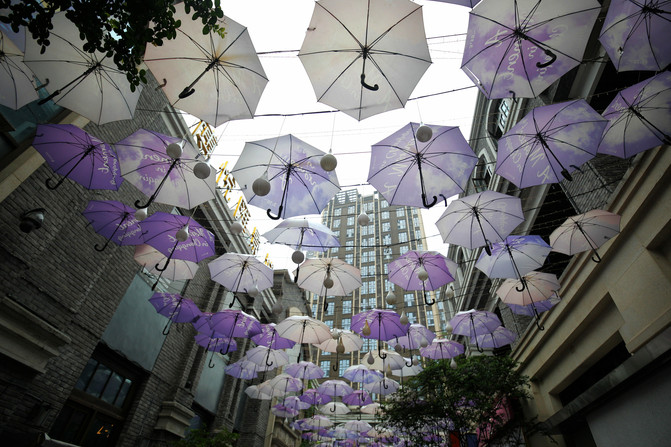





Before coming out, I ate a bowl of iced glutinous rice balls at Old Street Tangyuan Store.


Before returning to the hotel to pick up my luggage, I ate yam porridge and roast duck rice at Bayi Delicious Street. Then I took my luggage and took the subway to Jiangbei Airport, and took the plane back to Nanjing.


Previous Article:A Tale of Two Cities in Chongqing and Chengdu
Next Article:What should Chongqing look like? A niche game from non-Chongqing people
